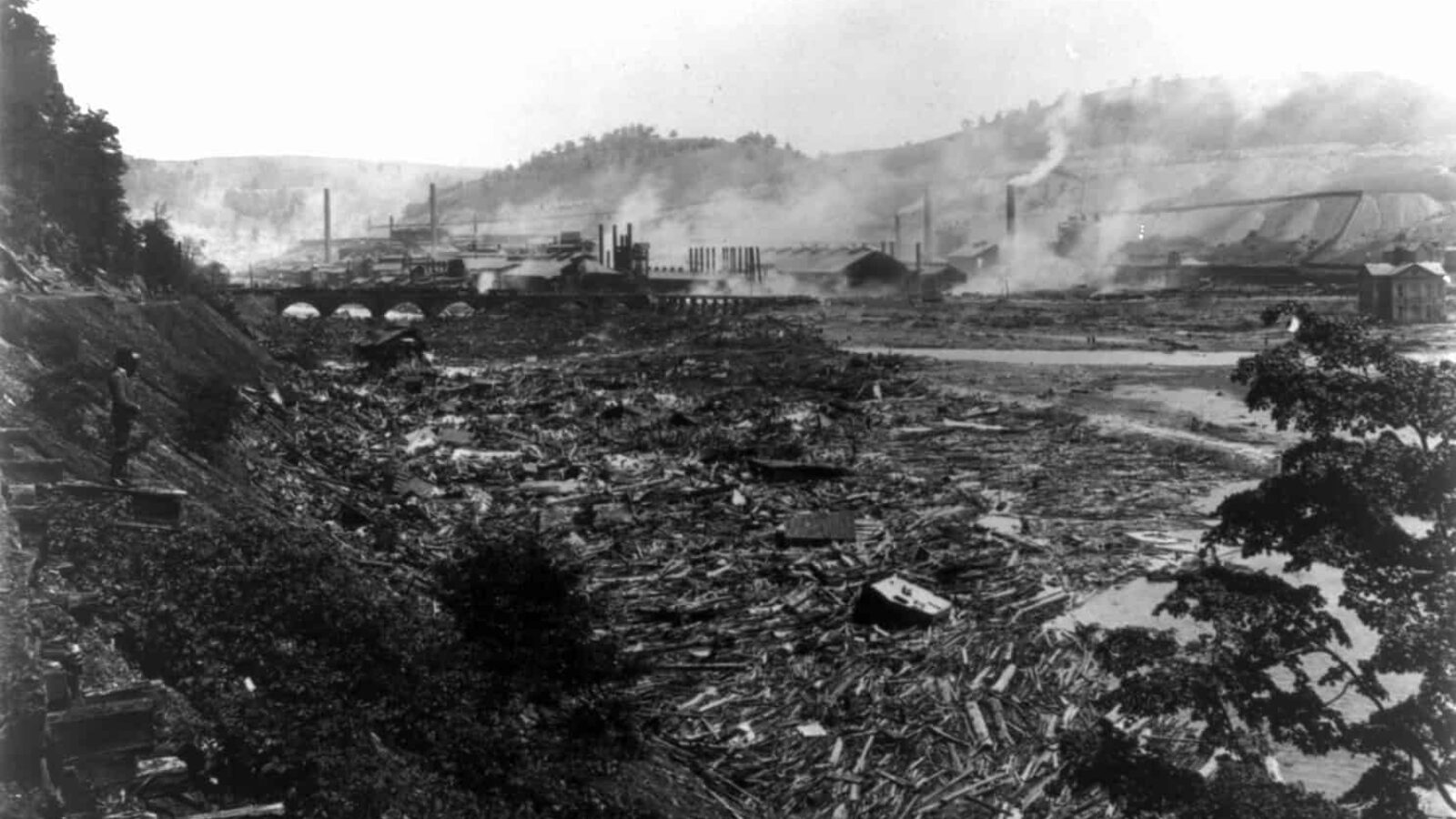May 31, 1889: The most destructive flood of the nineteenth century was the Johnstown Flood, also known as the Great Flood of 1889. Fourteen miles upstream of Johnstown, Pennsylvania, the South Fork Dam failed, resulting in catastrophic flooding, millions of dollars in damage, and the death of 2,208 people. The Red Cross, led by Clara Barton, undertook massive recovery efforts, and the ensuing lawsuits changed the laws regarding liability and dam structures.
Johnstown Flood
From Wikipedia, the free encyclopedia
The Johnstown Flood, sometimes referred to locally as Great Flood of 1889, occurred on Friday, May 31, 1889, after the catastrophic failure of the South Fork Dam, located on the south fork of the Little Conemaugh River, 14 miles (23 km) upstream of the town of Johnstown, Pennsylvania, United States. The dam ruptured after several days of extremely heavy rainfall, releasing 14.55 million cubic meters of water.[3] With a volumetric flow rate that temporarily equaled the average flow rate of the Mississippi River,[4] the flood killed 2,208 people[5] and accounted for US$17,000,000 (equivalent to $553,696,296 in 2022) in damage.
The American Red Cross, led by Clara Barton and with fifty volunteers, undertook a major disaster relief effort.[6] Support for victims came from all over the U.S. and eighteen foreign countries. After the flood, survivors suffered a series of legal defeats in their attempts to recover damages from the dam’s owners. This led to American law changing from a fault-based regime to one of strict liability.
